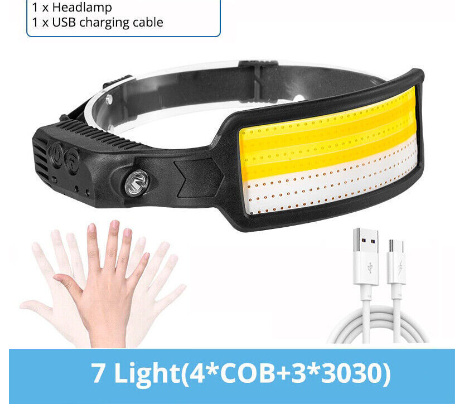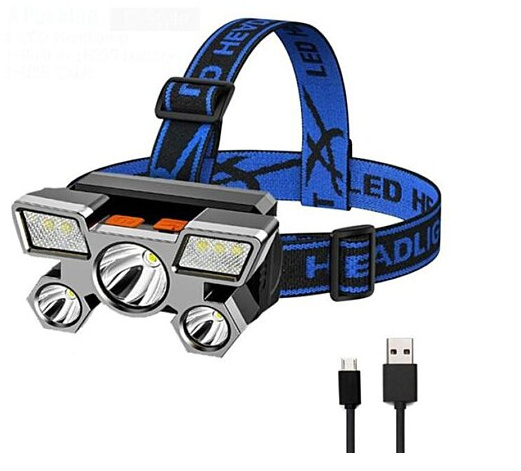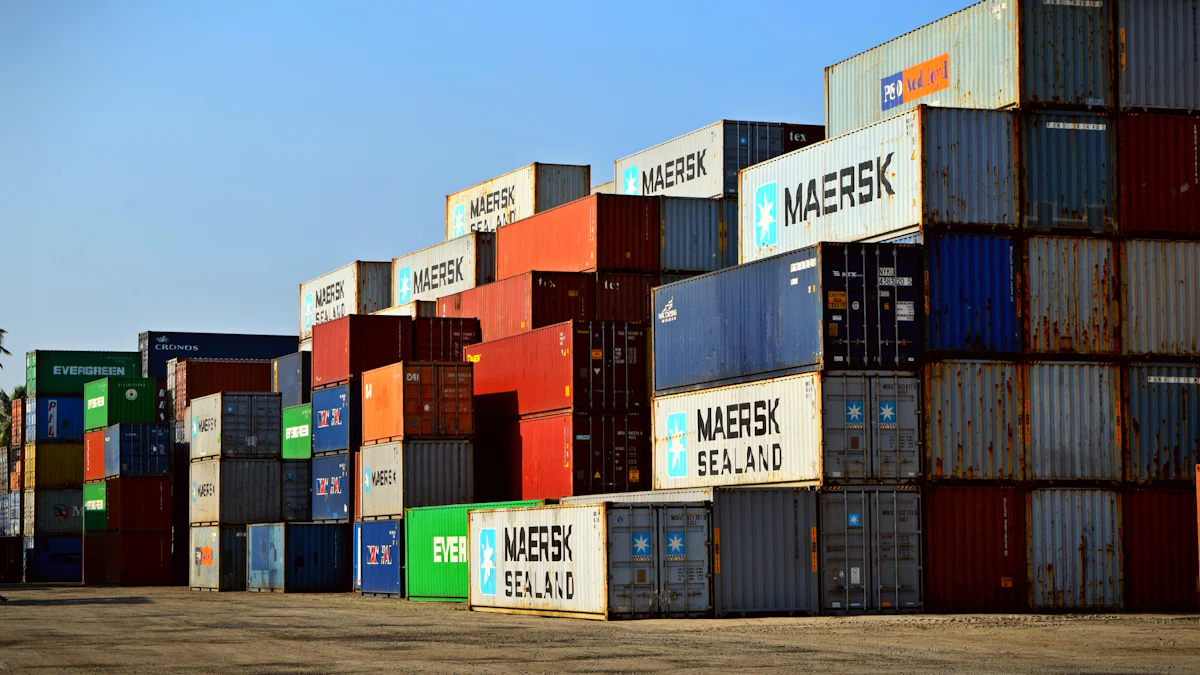The Challenges of Ordering Flashlights for International Distribution

Expanding your flashlight business to global markets comes with unique hurdles. You face the challenges of ordering flashlights for international distribution, including navigating complex logistics, adhering to varying regulations, and maintaining consistent product quality. Cultural differences also play a significant role in shaping consumer preferences and expectations. Addressing these issues ensures smooth operations and builds trust with your customers. By understanding these obstacles, you can create strategies to overcome them and achieve success in international distribution.
Key Takeaways
Learn about the problems with shipping items worldwide. Planning ahead can stop delays from busy ports or customs checks.
Study and follow global rules. Following safety and labeling rules builds trust and helps your products arrive without problems.
Use good inventory management methods. Check stock often and organize warehouses to save money and meet demand.
Change your products for local tastes. Adjusting flashlight features and looks for different cultures makes customers happier.
Use modern tools to talk with suppliers. Clear talking solves time zone and language problems, helping with on-time production and delivery.
Logistical Challenges in Flashlight Distribution

Shipping Delays and Their Impact
Common causes of international shipping delays
Shipping delays can disrupt your supply chain and affect customer satisfaction. Several factors contribute to these delays:
Port congestion slows down the movement of goods.
Unpredictable weather conditions impact shipping schedules.
Inadequate documentation leads to customs hold-ups.
Labor strikes or shortages delay loading and unloading processes.
These challenges highlight the importance of proactive planning to maintain supply chain resiliency.
Strategies to minimize shipping disruptions
You can reduce shipping delays by adopting strategic measures:
Partner with reliable logistics providers who have experience in international shipping.
Use technology to track shipments in real time and anticipate potential delays.
Ensure all shipping documents are accurate and complete before dispatch.
Diversify shipping routes to avoid bottlenecks at congested ports.
By implementing these strategies, you can mitigate the impact of delays and keep your flashlight distribution on schedule.
Navigating Customs Clearance
Frequent customs issues for flashlight imports
Customs clearance often presents significant supply chain challenges. Common issues include:
Navigating complex tariffs that vary by country.
Managing strict regulations for product safety and labeling.
Ensuring timely delivery amid global shipping delays.
These hurdles can slow down the entry of your products into international markets.
Tips for smoother customs processes
To streamline customs clearance, you should:
Research the import requirements of each target country thoroughly.
Work with customs brokers who understand local regulations.
Label your flashlights clearly, ensuring compliance with international standards.
Maintain accurate records of all transactions to avoid disputes.
Efficient customs management ensures your products reach customers without unnecessary delays.
Warehousing and Inventory Management
Challenges of managing inventory across multiple regions
Managing inventory for international flashlight distribution involves unique challenges. You must coordinate stock levels across various regions while accounting for demand fluctuations. Poor organization can lead to overstocking in one area and shortages in another. Additionally, storage costs can escalate if warehouses are not optimized.
Solutions for efficient warehousing and distribution
Adopting best practices can improve your inventory management:
Check and log inventory upon receiving to ensure quality and quantity.
Store fast-moving items near shipping areas for quicker access.
Use picking aids like barcode scanners to enhance accuracy.
Automate storage and retrieval systems to reduce labor costs.
Track inventory in real time to minimize discrepancies and optimize storage utilization.
These solutions not only enhance efficiency but also support flashlight market growth by ensuring timely delivery to customers.
Regulatory Compliance for Flashlights
Meeting International Standards and Certifications
Key certifications required for flashlights
When selling flashlights globally, you must meet specific certifications to ensure safety and performance. Different regions have unique requirements:
In North America, UL standards apply, including UL 913 for hazardous locations.
Europe requires compliance with the ATEX Directive, marked with the ‘EX’ symbol for explosive atmospheres.
The IECEx System provides global certification for use in explosive environments.
Additionally, UL 1576 addresses the unique features and performance needs of flashlights and lanterns. Meeting these certifications ensures your products are safe and market-ready.
Ensuring compliance with global standards
To comply with international standards, you should take proactive steps:
Collaborate with testing laboratories to verify your flashlight meets regional requirements.
Regularly review updates to certification standards to stay compliant.
Use high-quality materials and components to meet durability and safety benchmarks.
By prioritizing compliance, you can avoid legal issues and build trust with your customers.
Understanding Import and Export Laws
Common legal hurdles in international trade
Navigating import and export laws can be challenging. You may encounter:
Restrictions on certain materials used in LED flashlights.
Variations in labeling requirements across countries.
Tariffs and taxes that increase costs.
These hurdles can delay shipments and impact your bottom line.
Steps to navigate import/export regulations effectively
You can simplify the process by following these steps:
Research the trade laws of your target markets thoroughly.
Work with legal experts who specialize in international trade.
Maintain detailed records of your transactions to ensure transparency.
Use clear and accurate product descriptions to avoid customs disputes.
Taking these measures helps you streamline operations and ensures your flashlights reach customers without unnecessary delays.
Ensuring Quality Control in Flashlight Distribution
Maintaining Consistent Product Quality
Challenges of ensuring quality across regions
Ensuring consistent quality for your flashlight across multiple regions can be difficult. Different countries have varying environmental conditions, such as humidity or temperature, which can affect product performance. Manufacturing processes may also vary if you work with multiple suppliers. This inconsistency can lead to customer dissatisfaction and harm your brand reputation.
Another challenge involves maintaining uniform standards for materials and components. For example, LED technology must meet specific brightness and durability requirements. If suppliers use substandard materials, the product may fail to meet customer expectations.
Best practices for quality assurance in global markets
You can overcome these challenges by implementing robust quality control measures. Start by creating a standardized checklist for inspecting materials and finished products. This ensures every flashlight meets your specifications, regardless of where it is manufactured.
Invest in regular audits of your suppliers’ facilities. These audits help you identify potential issues early and ensure compliance with your quality standards. Use advanced testing equipment to evaluate the performance of LED components and other critical parts.
Training your team on quality assurance procedures is equally important. Educate them on identifying defects and maintaining consistency across regions. By prioritizing these practices, you can deliver reliable products to your customers worldwide.
Managing Defective Products and Returns
Handling international returns and replacements
Managing defective products in international markets presents unique challenges. Shipping costs for returns can be high, and delays may frustrate customers. Additionally, language barriers can complicate communication during the return process.
To address these issues, establish a clear return policy that outlines the steps for replacements. Partner with local service centers to handle repairs and replacements efficiently. This reduces shipping costs and speeds up the process.
Building trust through effective quality control measures
Effective quality control builds trust with your customers. When you consistently deliver high-quality flashlights, customers are more likely to remain loyal to your brand. Addressing defects promptly and transparently also enhances your reputation.
Use customer feedback to improve your products and processes. This shows your commitment to meeting their needs and maintaining high standards. By focusing on quality, you can overcome the challenges of ordering flashlights for international distribution and strengthen your global presence.
Cost Management in International Flashlight Distribution
Managing Shipping Fees and Tariffs
How shipping costs affect profitability
Shipping fees and tariffs significantly impact your profitability in international flashlight distribution. High shipping costs can erode your margins, especially when dealing with bulky or heavy shipments. Tariffs, which vary by country, add another layer of expense. These costs can make your products less competitive in the market. For example, if your LED flashlights face high import duties, their retail price may exceed what customers are willing to pay. Understanding these expenses is crucial to maintaining supply chain resiliency and ensuring your business remains profitable.
Strategies to reduce shipping expenses
You can adopt several strategies to lower shipping costs. Consolidating shipments reduces the number of trips and minimizes expenses. Partnering with logistics providers who offer discounted rates for bulk shipping can also help. Using regional warehouses allows you to store products closer to your customers, cutting down on long-distance shipping costs. Additionally, negotiating tariff exemptions or reductions through trade agreements can save money. By implementing these measures, you can manage shipping fees effectively and improve your bottom line.
Addressing Currency Fluctuations
Risks of currency exchange in global trade
Currency fluctuations pose a significant risk in international trade. When exchange rates shift unexpectedly, your costs can increase, reducing your profits. For instance, if the currency in your supplier’s country strengthens, you may need to pay more for the same order. These fluctuations can disrupt your financial planning and create supply chain challenges. Without proper management, they can destabilize your operations and affect your ability to compete in the market.
Tools and strategies to manage currency fluctuations
You can mitigate currency risks by using financial tools like forward contracts. These contracts lock in exchange rates for future transactions, protecting you from unfavorable shifts. Diversifying your suppliers across different regions reduces reliance on a single currency. Monitoring exchange rates regularly helps you anticipate changes and adjust your pricing accordingly. Collaborating with financial experts ensures you have a robust strategy to manage currency risks. By taking these steps, you can safeguard your profits and maintain a stable supply chain.
Cultural and Market Differences in Flashlight Distribution

Adapting to Consumer Preferences
How cultural differences influence flashlight design
Cultural preferences often shape the design and functionality of flashlights. In some regions, consumers prioritize durability for outdoor activities like camping or hiking. In others, compact and lightweight designs appeal more to urban users. Color preferences also vary. For example, bright colors may attract buyers in one market, while neutral tones dominate in another.
You should also consider how cultural norms influence product features. In areas with frequent power outages, customers may prefer flashlights with extended battery life. In contrast, regions with advanced infrastructure might demand high-tech features like USB charging or smart connectivity. Understanding these cultural nuances helps you create products that resonate with local buyers.
Customizing products to meet local market demands
Customizing your products ensures they align with the specific needs of each market. Start by researching the local climate, lifestyle, and purchasing habits. For instance, in humid regions, waterproof flashlights may gain popularity. In colder climates, models designed to withstand freezing temperatures could perform better.
You can also tailor packaging and branding to reflect local tastes. Use language and imagery that resonate with the target audience. Offering region-specific features, such as adjustable brightness levels or solar charging, can further enhance your product's appeal. By adapting to these demands, you position yourself as a trusted player in the led flashlight market.
Tailoring Marketing Strategies
Creating region-specific marketing campaigns
Effective marketing requires a localized approach. A one-size-fits-all strategy rarely works in international markets. Design campaigns that reflect the values and interests of your target audience. For example, in eco-conscious regions, highlight the energy efficiency of your flashlights. In areas with a strong focus on technology, emphasize innovative features like LED advancements.
Leverage local events and holidays to promote your products. Collaborating with regional influencers can also boost your brand's visibility. These influencers understand the preferences of their audience and can help you connect with potential customers.
Overcoming language and cultural barriers in advertising
Language and cultural differences can create challenges in advertising. Miscommunication or cultural insensitivity can harm your brand's reputation. To avoid this, work with local experts who understand the nuances of the language and culture.
Translate your marketing materials accurately, ensuring they convey the intended message. Avoid idioms or phrases that may not resonate with the local audience. Use visuals and symbols that align with cultural norms. By addressing these barriers, you can build a strong connection with your customers and establish a successful presence in the market.
Supplier and Manufacturer Coordination for Flashlights
Overcoming Communication Challenges
Issues with time zones and language barriers
Coordinating with suppliers across different time zones and languages can complicate your operations. Time zone differences may delay responses, slowing down decision-making. Language barriers can lead to misunderstandings, especially when discussing technical specifications or production schedules. These challenges can disrupt your supply chain and affect the timely delivery of your flashlights.
Tools for effective communication with suppliers
You can overcome these challenges by using modern communication tools. Voice communication platforms like Zoom, Microsoft Teams, and Cisco Webex allow you to hold real-time discussions, even across time zones. Video conferencing tools such as Google Meet and Skype enable face-to-face interactions, which help clarify complex issues. For quick updates, VoIP services like RingCentral and Intercom provide reliable options. These tools ensure clear communication, helping you address supply chain challenges effectively.
Ensuring Timely Production and Delivery
Managing production schedules across borders
Coordinating production schedules with manufacturers in different countries requires careful planning. Delays in one region can ripple through your supply chain, causing missed deadlines. Variations in holidays, working hours, and local regulations can further complicate scheduling. To manage this, you should create a centralized production calendar that accounts for these differences. Regularly reviewing progress with your suppliers ensures that timelines stay on track.
Building strong relationships with manufacturers
Strong relationships with your manufacturers are essential for smooth operations. Regular communication fosters trust and ensures alignment on goals. Visiting manufacturing facilities, when possible, helps you understand their processes and address potential issues early. Offering feedback on their performance shows your commitment to collaboration. By building these relationships, you can ensure consistent production quality and timely delivery of your flashlights to global markets.
The challenges of ordering flashlights for international distribution demand your attention to logistics, regulations, quality control, and cultural differences. Addressing these issues ensures your product reaches the market efficiently and meets customer expectations. Proactive planning and strategic solutions play a vital role in overcoming these obstacles.
Invest in reliable logistics partners to streamline shipping and warehousing. Understand international regulations to avoid compliance issues. Leverage technology to enhance communication and maintain product quality. By taking these steps, you can build strong supplier relationships and position your flashlight business for global success.
FAQ
What are the most important certifications for flashlights in global markets?
Certifications like UL (North America), ATEX (Europe), and IECEx (global) ensure safety and performance. These standards verify that your flashlights meet regional requirements for hazardous environments and durability.
How can you reduce shipping costs for international flashlight distribution?
Consolidate shipments to minimize trips. Use regional warehouses to store products closer to customers. Partner with logistics providers offering bulk discounts. Negotiate tariff reductions through trade agreements.
What tools help manage communication with international suppliers?
Use platforms like Zoom or Microsoft Teams for real-time discussions. Employ video conferencing tools like Google Meet for face-to-face interactions. VoIP services such as RingCentral ensure quick updates.
How do cultural differences affect flashlight design?
Cultural preferences shape design choices. Some regions value durability for outdoor use, while others prefer compact designs. Features like extended battery life or USB charging may appeal to specific markets.
What steps ensure compliance with import/export regulations?
Research trade laws for each target market. Work with legal experts specializing in international trade. Maintain detailed transaction records. Use accurate product descriptions to avoid customs disputes.
See Also
Finding Quality Flashlights for Your Import Business at Wholesale
Boosting Profits by Sourcing Flashlights from Wholesale Vendors
Selecting Top Flashlights for Your Wholesale Buying Needs
Top Suppliers for Bulk Flashlight Purchases at Wholesale
Assessing Flashlight Suppliers: Important Factors and Current Trends
